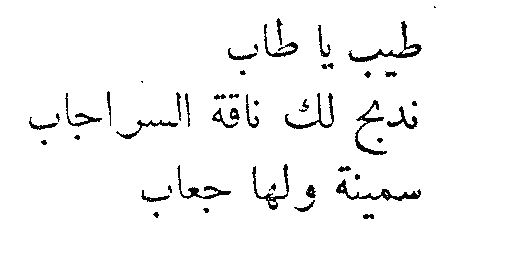[Page 146] The board for this game consists of six rows of ten "houses", or of four rows if a shorter game is desired. The two players, A and B, each have six counters, disposed as shown in Fig. 12.

Those of A (XX) move as indicated by the single-headed arrows and those of 13 (OO) as indicated by the double-headed arrows.
[Page 147] It will be noticed that the counters of the two players, as they move, never meet each other, but may catch each other up. The dice are thrown, and score, as in the Hyena game, a throw of "yōmźn" stopping the player. Tābas are marked up to a player's credit, and one is required to enable each of his counters to move from its original position. After the counters have begun their course, the player is free to move anyone of them, with a view to overtaking the counters of his opponent. A counter is "eaten" when overtaken and removed from the board. Spare "tābas" may be used to assist in overhauling an opponent's counter. The player who" eats" most, wins.
There is room for a certain amount of skill in selecting the counter most profitably to be moved after a throw of the dice.
The following is the sort of jingle with which the player will exhort the dice when they are falling badly for him:

Tib yā tāb
Nidbah leik nāga(t)es-Serājāb
Semīna wa leiha ji'ab
Be good, Dice!
I'll slaughter for you a Serājābi - she-camel,
A fat one, with a rump to her.
Last update January 6, 2010